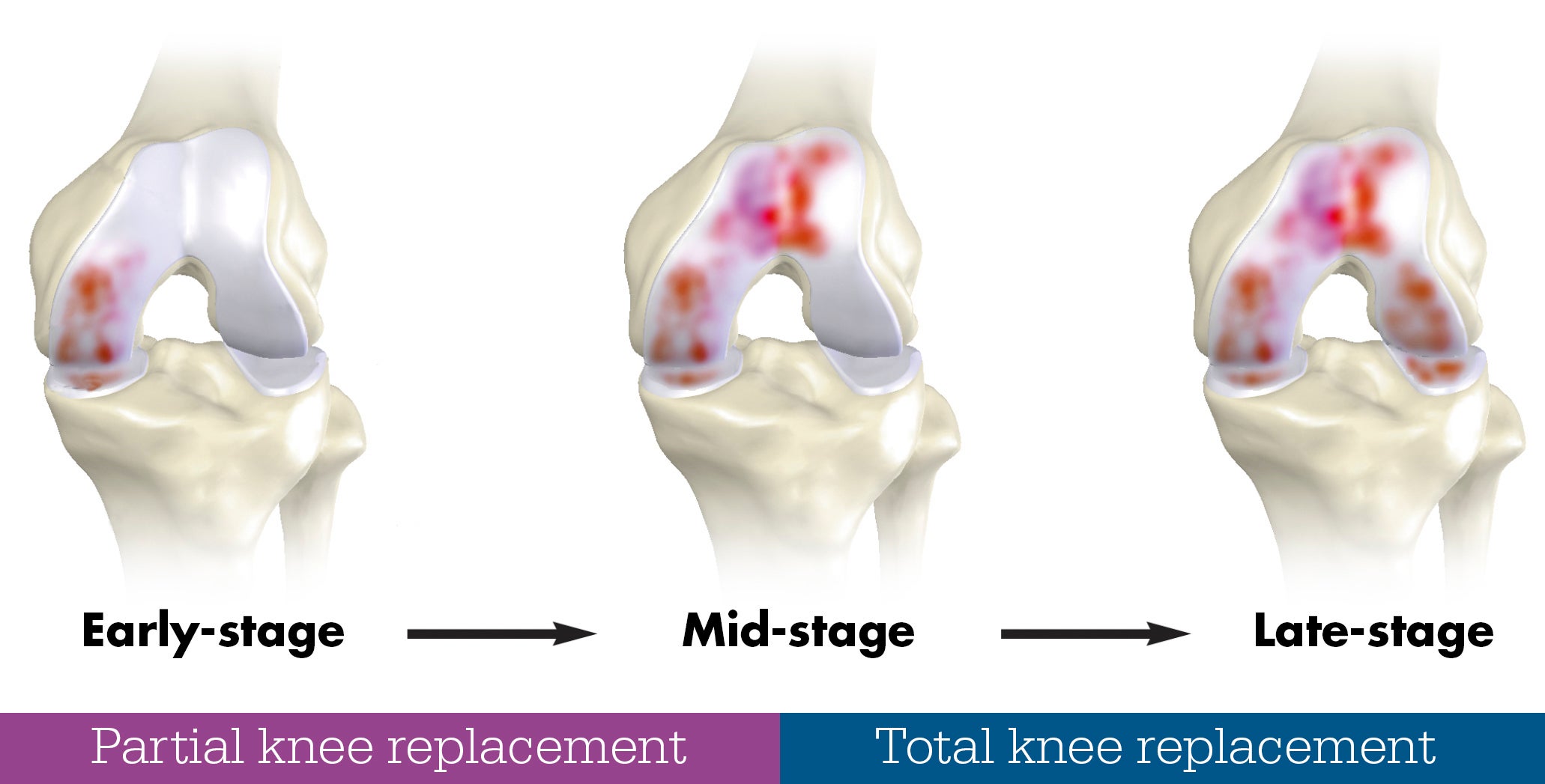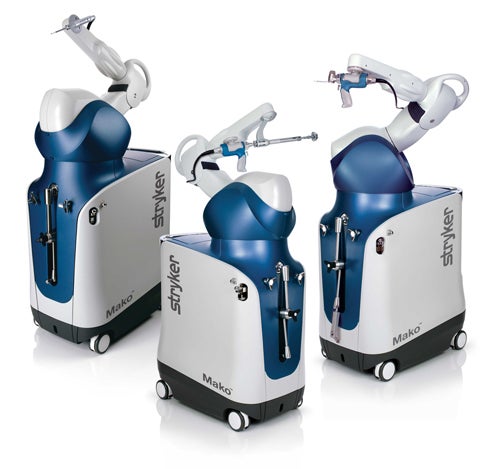 MAKOplasty is a patient-specific, robotic arm procedure for partial knee replacement, total knee replacement and total hip replacement. It is designed to relieve pain caused by joint degeneration. By targeting only the damaged part of the knee, your surgeon can repair the knee while sparing healthy bone and ligaments surrounding it. In hip replacement cases, the robotic arm helps provide unprecedented surgical accuracy. A hip replacement by the surgeons with the Ochsner Lafayette General family is second to none.
MAKOplasty is a patient-specific, robotic arm procedure for partial knee replacement, total knee replacement and total hip replacement. It is designed to relieve pain caused by joint degeneration. By targeting only the damaged part of the knee, your surgeon can repair the knee while sparing healthy bone and ligaments surrounding it. In hip replacement cases, the robotic arm helps provide unprecedented surgical accuracy. A hip replacement by the surgeons with the Ochsner Lafayette General family is second to none.
We understand that making sure you know what to expect from your joint replacement experience is important to you.
Each patient is unique, and can experience joint pain for different reasons. It’s important to talk to our orthopedic specialists about the reason for your joint pain so you can understand the treatment options available to you.
It is common for patients to try medication and other conservative treatments to treat their hip pain or knee pain. If you haven’t experienced adequate joint pain relief with those treatment options, you may be a candidate for Mako total hip replacement surgery, Mako total knee replacement surgery or Mako partial knee replacement surgery, which may provide you with joint pain relief.
To learn more or to make an appointment at Ochsner Lafayette General Orthopedic Center, call 337-703-3201.
How does Mako Technology (MAKOplasty) work?
Mako Robotic-Arm Assisted Technology provides you with a personalized surgical plan based on your unique anatomy. First, a CT scan of the diseased hip or knee joint is taken. The CT scan is uploaded into the Mako System software, where a 3D model of your hip or knee is created. This 3D model is used to pre-plan and assist your surgeon in performing your hip replacement or knee replacement surgery.
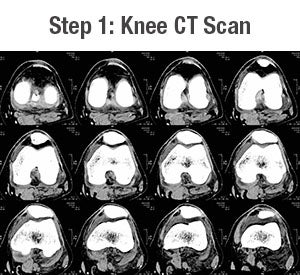
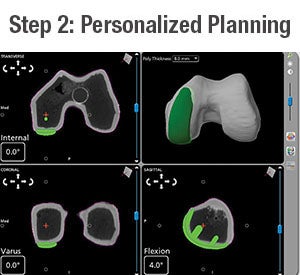
In the operating room, your orthopedic surgeon follows your personalized surgical plan while preparing the bone for the implant. The orthopedic surgeon guides the robotic arm within the pre-defined area and the Mako System helps the surgeon stay within the planned boundaries that were defined when the personalized pre-operative plan was created.
In a laboratory study, Mako Total Knee Technology demonstrated accurate placement of implants to a personalized surgical plan. This study also showed Mako total knee replacement demonstrated soft tissue protection to the ligaments around the knee. Inpatient and laboratory studies on Mako total hip replacement and partial knee replacement, Mako Technology demonstrated accurate placement of implants to a personalized surgical plan.
Partial Knee Replacement vs. Total Knee Replacement
Based on the severity of arthritis in your knee, total or partial knee replacement may be recommended by your surgeon. Your surgeon will determine how much of the joint needs to be replaced based on scans. Both procedures involve the orthopedic surgeon guiding the Mako Robotic-Arm to remove diseased bone and cartilage. Your knee pain will be a thing of the past.
Mako robotic-arm assisted partial knee replacement is a treatment option for adults living with early to mid-stage osteoarthritis (OA) that has not yet progressed to all three compartments of the knee. Depending on where arthritis affects the knee, patients may have an implant inserted in any of the following areas:

Mako for Partial Knee Replacement
Unlike more invasive procedures, MAKOplasty is usually performed through a four- to six-inch incision over your knee with small incisions in both your femur (thigh bone) and tibia (shin). Additionally, preserving your own natural bone and tissue, along with accurate implant positioning, results in a more natural feeling knee.
Because healthy bone is preserved, patients who undergo MAKOplasty partial knee replacement procedures may remain candidates for total knee replacement later in life.
A total knee replacement is sometimes necessary if your surgeon discovers, during surgery, that your knee has more damage than originally seen in the pre-operative X-rays and CT scans. MAKOplasty Partial Knee Resurfacing can:
- Enable surgeons to precisely resurface only the arthritic portion of the knee
- Preserve healthy tissue and bone
- Facilitate optimal implant positioning to result in a more natural feeling knee following surgery
- Result in a more rapid recovery and shorter hospital stay than traditional total knee replacement
As a knee arthroplasty (repair) procedure, Medicare insurers typically cover MAKOplasty – check with your private health insurers for details. In some cases, it may be performed in an outpatient setting depending on what your surgeon determines is the right course of treatment for you.
To learn more or to make an appointment at Ochsner Lafayette General Orthopedic Center, call 337-703-3201.
Download the Mako Knee Education Guide
Download the Mako Knee Pre-Op Guide
Mako for Total Knee Replacement
In comparison, Mako robotic-arm assisted total knee replacement is a treatment option for adults living with mid to late-stage osteoarthritis of the knee. With Mako total knee replacement, the entire knee joint is replaced and the orthopedic surgeon inserts a knee implant.
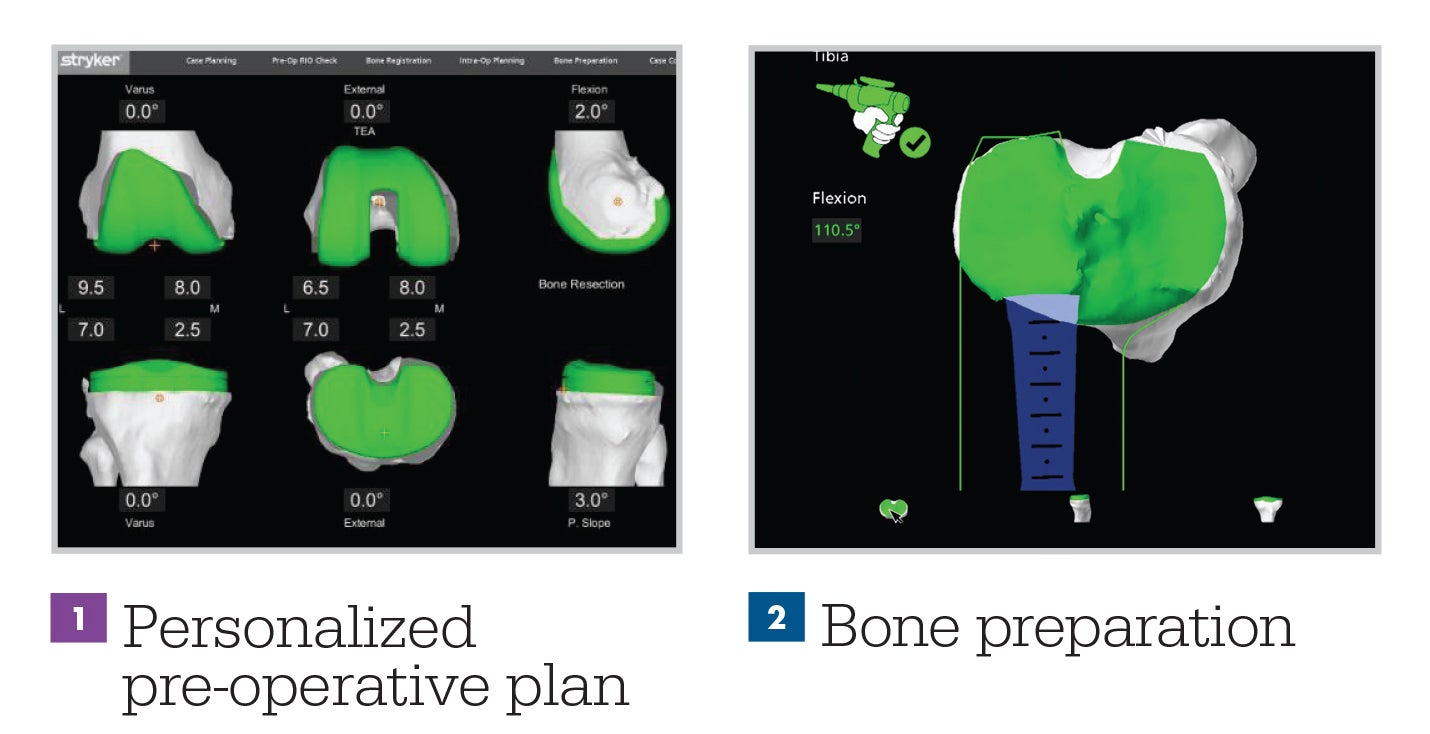
Total Hip Replacement
For patients suffering non-inflammatory or inflammatory degenerative joint disease of the hip who no longer respond to non-surgical treatment, total hip arthroplasty (THA) also known as total hip replacement is often recommended. Yet, despite its safety and long-term outcomes, 90% of total hip arthroplasty (replacement) patients decline surgery.
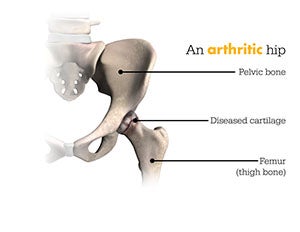
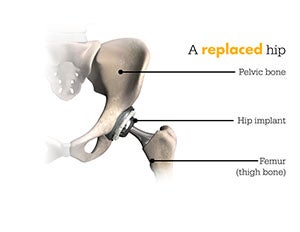
Conventional hip replacement relies on instrumentation guides or visual assessment for bone preparation and implant alignment. Poorly placed or misaligned implants can lead to damage, wear or dislocation.
MAKOplasty eliminates much of the guesswork of manual hip replacement. The results are more consistently reproducible and more accurate. This maximizes the opportunity for patient satisfaction and may increase the lifespan of the hip implant. Our orthopedic surgeons will help you understand the recovery time needed for a hip replacement and how you can maximize the lifespan of your replacement hip.
Makoplasty Hip Replacement Benefits
MAKOplasty Total Hip Arthroplasty offers the following key benefits over conventional manual procedures:
- More Accurate Cup Placement – MAKOplasty enables pelvic cup alignment within 5 degrees of center of rotation and within 2mm of the surgical plan. This reduces the potential for impingement, wear and dislocation. Impingement is the #1 cause of failure in total hip arthroplasty.
- More Accurate Leg Length Restoration – MAKOplasty enables leg length restoration accuracy within 3mm of plan, reducing the potential for discomfort and walking complications.
Mako Robotic-Arm Assisted Total Hip Replacement is a surgical procedure intended for patients who suffer from non-inflammatory or inflammatory degenerative joint disease (DJD). Some forms of DJD include osteoarthritis (OA), post-traumatic arthritis, rheumatoid arthritis (RA), avascular necrosis (AVN) and hip dysplasia.
Download the Mako Hip Education Guide
Download the Mako Hip Pre-Op Guide
It’s important to understand the MAKO robotic-arm assisted surgery is performed by an orthopedic surgeon, who guides the robotic arm during the surgery to position the implant in the knee and hip joints. The Mako Robotic-Arm does not perform surgery, make decisions on its own or move without the orthopedic surgeon guiding it. The Mako System also allows your orthopedic surgeon to make adjustments to your plan during surgery as needed.
To learn more or to make an appointment at Ochsner Lafayette General Orthopedic Center, call 337-703-3201.
